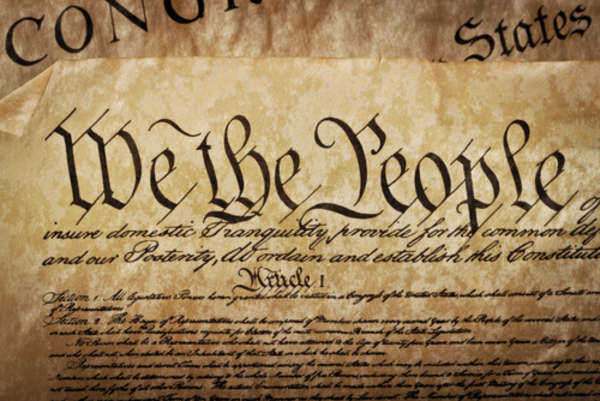
Introduction
The Election of 1824 was a significant event in American political history, as it marked a turning point in American presidential elections. The election was notable for several reasons, including the fact that it was the first time that the House of Representatives had to decide the presidency, and the candidate who won the most popular and electoral votes did not become president. The election of 1824 reflected the complexities and challenges of American democracy, and its consequences reverberated through American politics for decades. In this article, we will explore the events leading up to the election, the election itself, and its implications for American politics.
Background
The election of 1824 occurred at a time of political transition in American history. The era of good feelings, a period of relative political harmony following the War of 1812, was coming to an end, and new issues and challenges were emerging. The candidates in the election of 1824 represented distinct political factions, each with different visions for the country’s future.
John Quincy Adams, the son of the second President,
John Adams, was the nominee of the National Republicans, a party formed in opposition to Andrew Jackson. Jackson was the candidate of the Democratic-Republicans, the party that had dominated American politics since the early days of the republic.
William Crawford, the Secretary of the Treasury, and Henry Clay, the Speaker of the House of Representatives, were also candidates in the election. Both men were supporters of the so-called American system, a set of policies that aimed to promote economic growth and industrial development in the United States.
The Election
The election of 1824 was the first time that the popular vote was recorded, although only in six states. The popular vote showed a clear victory for Andrew Jackson, who won 152,901 votes, compared to 114,023 for John Quincy Adams, 46,979 for William Crawford, and 47,217 for Henry Clay. However, the popular vote did not determine the outcome of the election, as the winner had to receive a majority of the electoral votes.
In the electoral college, none of the candidates received a majority of the votes required to win, and the election went to the House of Representatives. Under the Constitution, each state delegation in the House had one vote, and the candidate who received a majority of the votes would become president.
The election in the House of Representatives was contentious and drawn-out, lasting from February 9 to February 11, 1825. The speaker, Henry Clay, held significant influence in the House and was widely expected to support his fellow American system candidate, John Quincy Adams. Adams won the election in the House, receiving thirteen states’ votes, while Jackson received only seven, and Crawford received four.
Implications
The election of 1824 had significant implications for American politics, both in the short and long term. The election showed the flaws of the electoral system and demonstrated how it could result in outcomes that did not reflect the popular will. Jackson and his supporters argued that the outcome of the election was unfair and that the House of Representatives had conspired against him.
The election also marked the beginning of a new era in American politics, with the emergence of new political parties and factions. The National Republicans, who supported John Quincy Adams, morphed into the Whig Party in the 1830s. The Democratic-Republicans, which supported Andrew Jackson, became the Democratic Party, and continued to represent a broad coalition of interests that included farmers, workers, and immigrants.
The election of 1824 also marked the beginning of Jacksonian Democracy, a political movement that emphasized the power of the common man, the importance of individual liberty, and the distrust of government and political elites. Jackson’s supporters saw him as a representative of the people and a champion of their interests, and his election in 1828 marked a new era in American politics.
Conclusion
The election of 1824 was a seminal event in American political history, marking the end of the era of good feelings and the beginning of a new era of political competition and conflict. The election demonstrated the flaws of the electoral system and highlighted the importance of the House of Representatives in the presidential election process. The election also marked the emergence of new political parties and factions, including the Whig Party, and heralded the rise of Jacksonian Democracy. Although the election of 1824 was a controversial and divided affair, its implications for American politics were profound, shaping the course of American democracy for decades to come.
The election of 1824 was, like the election of 1800, decided by a vote from the House of Representatives. This time it was not because two candidates tied in electoral votes, but it was instead because no single candidate received an absolute majority of electoral votes.
This was in no small part a result of the election’s very nature, as four different candidates arose from a single party. Each of these candidates had slightly different aims than the others, and though they were not officially from different parties at the time of the election, some of them would go on to found differing parties.
As these candidates all took electoral votes from different parts of the Electoral College map, no one candidate was able to win an absolute majority. The decision of the House of Representatives, in this case, is also notable because the House decided to give the election to a candidate who did not actually win the majority of electoral votes.
The four candidates in this election were Andrew Jackson from Tennessee, John Quincy Adams from Massachusetts, William H. Crawford from Georgia, and Henry Clay from Kentucky. Each candidate won a different part of the Electoral College map, with Adams garnering the electoral votes from New England while Jackson had electoral votes from all throughout the American states of the time.
The Electoral College map for the election shows Clay winning many votes in the West, while Crawford drew electoral votes from the southeast states. Because no candidate won a majority, the decision went to the House of Representatives, which only took three candidates with the most electoral votes into consideration, as defined under the terms of the Twelfth Amendment. Because of this, Henry Clay was not one of the options for the House of Representatives to choose in the Presidential decision. This was ironic, as Clay was also the Speaker of the House, and would have, theoretically, been able to exert his influence in that position in order to push himself towards the Presidency. Only Jackson, Adams, and Crawford had earned enough electoral votes to be considered, however.
Henry Clay eventually wound up throwing his support behind John Quincy Adams. Though Clay did not have nearly as many electoral votes as Adams did, Clay’s support was enough to tip the balance in Adams’ favor, as Adams gained support from parts of the Electoral College map that might otherwise never have voted for him.
In the election held by the House of Representatives in 1825, Adams won the election. This was not, however, the end of the story, as Andrew Jackson believed that Henry Clay and John Quincy Adams had worked out a corrupt deal to rig the election in Adams’ favor. Adams nominated Clay as his Secretary of State after Adams became President, simply furthering Jackson’s accusations.
Jackson’s anger came primarily from the fact that Jackson had not only won the popular vote, but he had also won more electoral votes than any other candidate. His support, as depicted on the Electoral College map, was widespread throughout the nation. Jackson believed that the election should have gone to him.
Though this election did not lead to any clear change in the Electoral College system, it did demonstrate the efficacy of the Twelfth Amendment in adjudicating unclear situations. Jackson’s anger notwithstanding, the system successfully appointed a new President and Vice President with little difficulty.
This election is noteworthy as the only time since that Amendment’s creation that the House of Representatives has had to determine the election, though in 2000 they were prepared to do so and had actually even gone so far as to vote on the matter so that the decision would be made if it was, indeed, turned over to the House of Representatives. The election is also noteworthy for the earlier stated reason, that it is the only election in which the candidate with the greatest number of electoral votes did not win, despite such clear support throughout the Electoral College map.


























